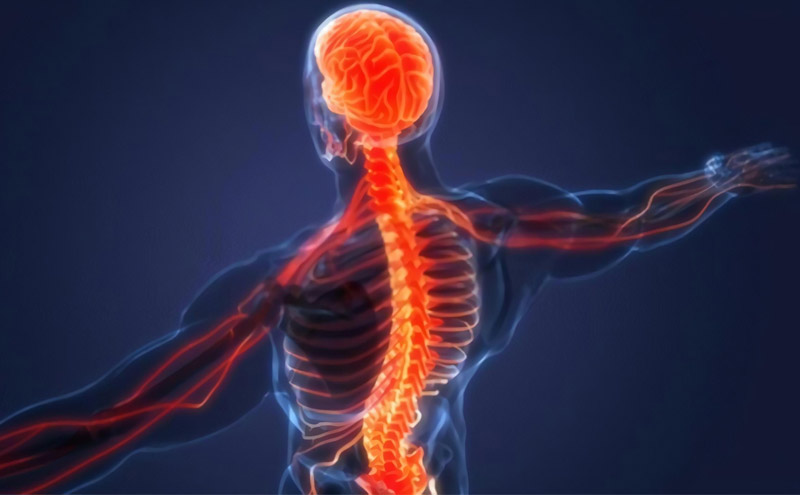🔥 Website for Sale - Contact Us
The endocannabinoid system (ECS) is wildly spread throughout the brain and nervous systems in all mammalian species.
In recent years studies found that the endocannabinoid system (ECS) is one of the most vital and extensive biological receptor systems in the body.
It has the potential to restructure the way humans approach health and wellness.
People are born with an endocannabinoid system that plays an important role in the development and electrical connections in the brain that allows neurotransmitters to send information.
Endocannabinoids and the receptors they bind to are found throughout the body in the nervous system, glands, immune system, organs, brain, and connective tissues.
The ECS is spread through all 11 central physiological systems in the body to help regulate essential survival functions.
It is responsible to balance critically physiological functions that impact our mood, sleep, appetite, pain, inflammation, memory, and reproduction.
How endocannabinoid system (ECS) works?
The ECS primary goal is to regulate and maintain homeostasis across all physiological systems.
The body’s response to external stress is to release the stress hormone cortisol into the bloodstream.
The increase of stress hormone leads to an increase in endocannabinoid (ingenious cannabinoid) production as a response.
The reason for the increase in endocannabinoid production is to manage and balance out the spike in cortisol production.
Endocannabinoids are made naturally inside our bodies and are a key compound in the endocannabinoid ecosystem (ECS).
Exogenous cannabinoids like CBD and THC are called Phytocannabinoids which means they originated from the cannabis plant.
Whereas ingenious cannabinoids like 2-AG and Anandamide originates from within our body.
Phytocannabinoids (exogenous ) and endocannabinoids (ingenious) cannabinoids react similarly within the ECS.
The ECS interacts with these two types of cannabinoids in a key and lock model arrangement.
Cannabinoids act as the keys while receptors act like locks within the ESC.
Each time a key pairs with a lock, the synergy causes an effect in our body.
Our endocannabinoid ecosystem exists out of three components. Endocannabinoids, enzymes, and receptors.
Endocannabinoids
Anandamide and 2-AG are the most prevalent and research endocannabinoids produce in our body.
2-AG is the most prevalent endocannabinoid which is responsible to regulate critical survival functions like pain, appetite, immune response.
Anandamide helps to regulate mood and stress response. It is also referred to as the “bliss molecule” because it is responsible for “runners high” and stress relief after exercise.
Enzymes
Any substance within the body that causes a chemical reaction is referred to as enzymes.
Metabolic Enzymes within the ECS interfere with used endocannabinoids junk to make them harmless and save to discard them from our body.
The two major enzymes are FAAH which breaks down anandamide, and MAGL which is responsible to neutralize 2-AG.
Another major function of these enzymes is to regulate the availability of endocannabinoids in the ECS.
They ensure that endocannabinoids are ready and available to use in our bodies. But more importantly, these enzymes discard the unused endocannabinoids.
This is the main property that differentiates endocannabinoids from other molecular processes in the body like neurotransmitters and hormones.
Receptors
Their main function of receptors is to receive messages transmitted by cannabinoids like THC, CBD, 2-AG, and Anandamide.
The two main types of receptors are CB1 and CB2.
CB1 receptors are prevalent in the brain and the spinal cord, working together to manage appetite, memory, and pain.
CB2 receptors exist in the immune system. Its primary goal is to reduce inflammation within the body.
The Endocannabinoid System role in our immune system (Chronic Inflammation)
Endocannabinoid System (ECS) is an endogenous management system in our body that controls critical functions like information.
Cronic information is a harmful process in which the immune system is activated for prolonged periods.
An overly active immune system can lead to more serious health conditions such as fibrosis, organ damage, or organ death.
Cronic information and fibrosis can affect any organ in our body and often plays a big role in more serious diseases.
Research shows that activating cannabinoid receptor type 2 (CB2) can help mitigate inflammation and fibrosis.
CB2 receptors are prevalent throughout our entire immune system.
Its primary goal is to regulate inflammation in our bodies.
When our body’s natural inflammation response is triggered, the ECS releases endocannabinoids called 2-AG and anandamide to help neutralize the infection.
However, a poor diet or a lack of exercise can prevent your body’s natural process to create anandamide and 2-AG endocannabinoids.
Therefore, disrupting your natural defense against inflammation-related diseases.
This lead to the increasing popularity of Omega-3 and CBD oil. Both these oils are filled with anti-informatory and repair an underperforming ECS.
Hemp CBD oil supplement contains natural phytocannabinoids that help support endocannabinoids against inflammation in our body.
Whereas omega-3 oil triggers the body to produces more natural endocannabinoids like Anandamide and 2-AG.
CBD and Omega-3 taken together help the body to maintain inflammatory homeostasis.
CBD combined with Omega-3 may be a great alternative remedy for Verigos symptoms and other inflammatory diseases.
Takeaway:
The endocannabinoid system performs different tasks throughout the body, but its primary goal is to maintain homeostasis.
The ECS works to keep the body stable through internal and external environment changes.
Summarised History of Cannabis
Cannabis is one of the oldest medicinal plants known to humans.
Hemp is one of the first agricultural crops and has been found in textiles dating back to 4000 BC.
Evidence suggests that the first recorded cannabis use for medical and recreation reasons dates back to 2,700 BC in China.
During this time cannabis was known to help with pain relief, insomnia, and gastrointestinal disorders.
By the 8th century, cannabis was used all over the world for medical reasons.
Up until the late 1930s, cannabis was one of the most popular crops in the United States because of its wide product applications like medicine and clothing.
It was the 3rd most prescribed medicine in the united states.
With over 200 marijuana remedies produce by well-known independent companies like Pfizer and Parke Davis, Squibb, and Eli Lilly.
Through this time period, the American people were fed misinformation and indoctrinated to believe that cannabis use will lead to psychosis.
As a result, without any public debate or scientific studies, the 1937 tax law was implemented.
The new act prohibited cannabis anywhere in the united states without a special tax permit.
The problem was that the state department did not give out any permits. Essentially outlawing it by regulation.





